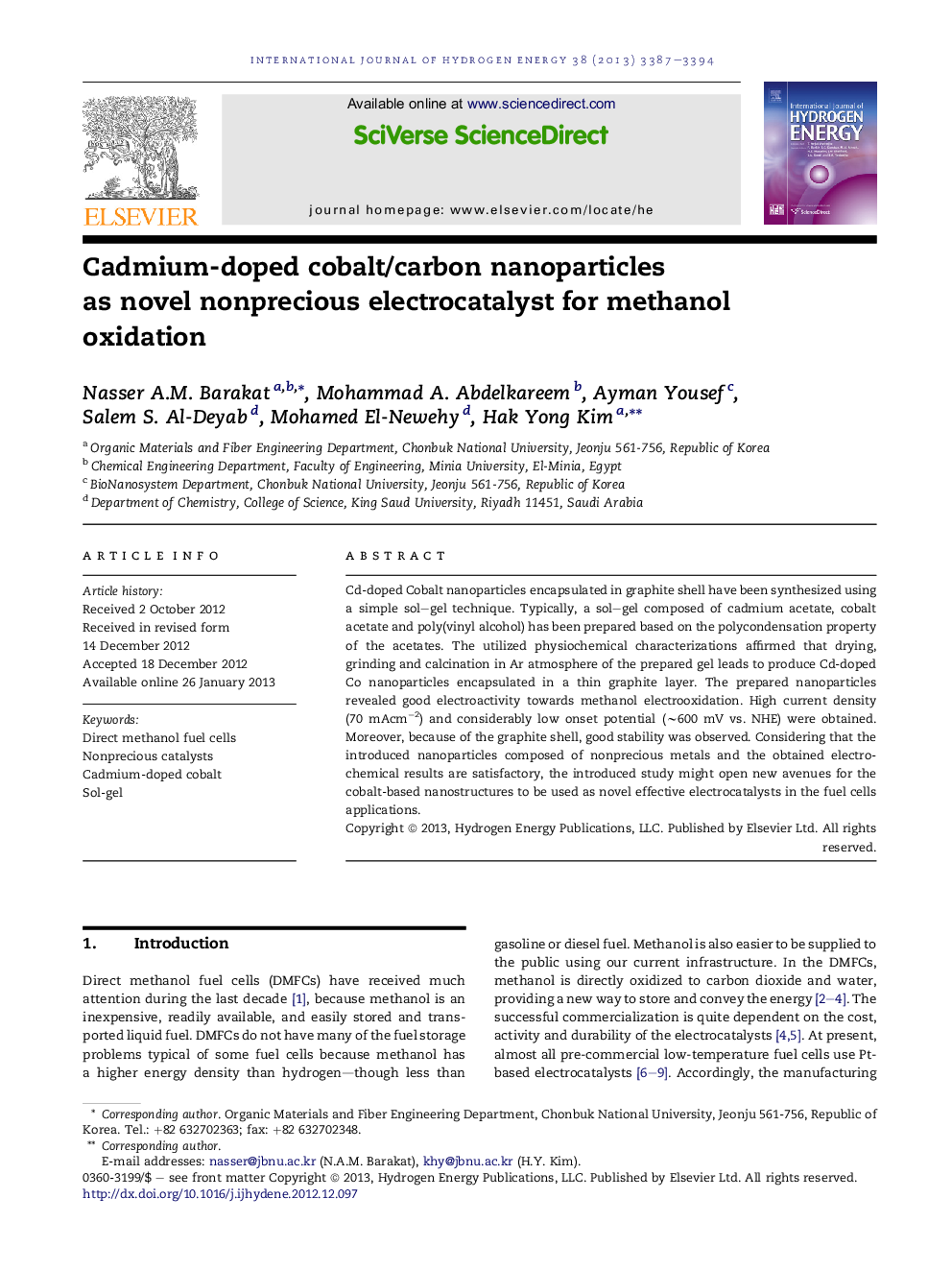| Article ID | Journal | Published Year | Pages | File Type |
|---|---|---|---|---|
| 1275757 | International Journal of Hydrogen Energy | 2013 | 8 Pages |
Cd-doped Cobalt nanoparticles encapsulated in graphite shell have been synthesized using a simple sol–gel technique. Typically, a sol–gel composed of cadmium acetate, cobalt acetate and poly(vinyl alcohol) has been prepared based on the polycondensation property of the acetates. The utilized physiochemical characterizations affirmed that drying, grinding and calcination in Ar atmosphere of the prepared gel leads to produce Cd-doped Co nanoparticles encapsulated in a thin graphite layer. The prepared nanoparticles revealed good electroactivity towards methanol electrooxidation. High current density (70 mAcm−2) and considerably low onset potential (∼600 mV vs. NHE) were obtained. Moreover, because of the graphite shell, good stability was observed. Considering that the introduced nanoparticles composed of nonprecious metals and the obtained electrochemical results are satisfactory, the introduced study might open new avenues for the cobalt-based nanostructures to be used as novel effective electrocatalysts in the fuel cells applications.
Graphical abstractFigure optionsDownload full-size imageDownload as PowerPoint slideHighlights► Cd-doped Co nanoparticles encapsulated in graphite shell are introduced. ► The introduced NPs can be effectively used as electrocatalyst in methanol oxidation. ► The introduced NPs reveal low onset potential and high current densities. ► It is the first time to introduce Co-mainly-based material as MOR electrocatalyst.
